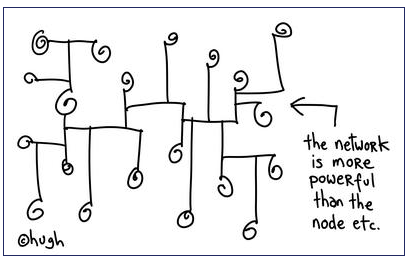 If you’ve been frustrated by how slowly companies are incorporating new communication technologies, the latest report by website usability pioneer Jakob Nielsen will either make you more unhappy or give you hope – depending on how you look at it.
If you’ve been frustrated by how slowly companies are incorporating new communication technologies, the latest report by website usability pioneer Jakob Nielsen will either make you more unhappy or give you hope – depending on how you look at it.
Nielsen’s study, Enterprise 2.0: Social Software on Intranets, will frustrate when he reports that it takes most major corporations three to five years to incorporate collaboration tools into their Intranets. That’s like 10 years in Internet time! (See also, Gartner’s Hype Cycle for Social Software)
And it’ll re-assure you, because it points out that when companies do bring Web 2.0 tools into their Intranets, and allow changes in their command and control corporate culture, positive change is likely to result.
Fear is costly
Companies that don’t bring social media technologies into their enterprise intranets also risk losing talented workers – especially younger ones, for whom open communication, collaboration and content generation are standard tools in their personal lives, Nielsen concludes.
While many companies block social media and even Internet access because they fear lost productivity, this very fear may actually be the cause of lost productivity. Incorporating wikis, blogs, tagging, RSS feeds, discussion forums and other collaboration tools into enterprise Intranets can enhance productivity, and help workers solve business problems.
Nielsen studied social intranet features of fourteen companies in six countries, and found that most companies are not very far along in a wholesale adoption of Web 2.0 technologies — unless “thinking about social software” is considered progress.
Not surprisingly, considering that many major corporations are just now accepting that social media really isn’t a fad they can ignore, Nielsen found that three to five years seems to be a common timeline for social intranet projects.
It’s not about software: it’s about what people do with software
Integration of social media tools into corporate Intranets, Nielsen notes, “is not just a technical matter, but also an organizational issue. For example, if a conclusion gels within a discussion forum, it then needs to move from talk to action. … you need a feedback loop to bring lessons back to sales, marketing, and other groups responsible for getting things done. … feedback loops should be somebody’s explicit job assignment or they may not happen.”
Many older senior managers consider community tools something their kids use. They worry about ceding the “command-and-control paradigm for corporate messaging,” policing the community, and being forced to change the corporate culture.
Too bad: because that train left the station long ago. Communities generally police themselves, giving people a chance to have their ideas and opinions heard, then rewarding innovation often leads to positive advances.
“This is a good time to remind you,” he writes, “of the French general: when told that it would take a hundred years for newly planted trees to grow big, he said, “better get started now.”
Related:
– A What’s Next Blog Social Media Reality Check for CEOs, CFOs, and CMOs
– A social media reality check from the C-suite
– How Companies Can Get Started in Social Media Marketing
– Does Your Company Have a Social Media Participation Policy? IBM & Sun Do
Cartoon by Hugh Macleod
Hat tip to Neville Hobson







